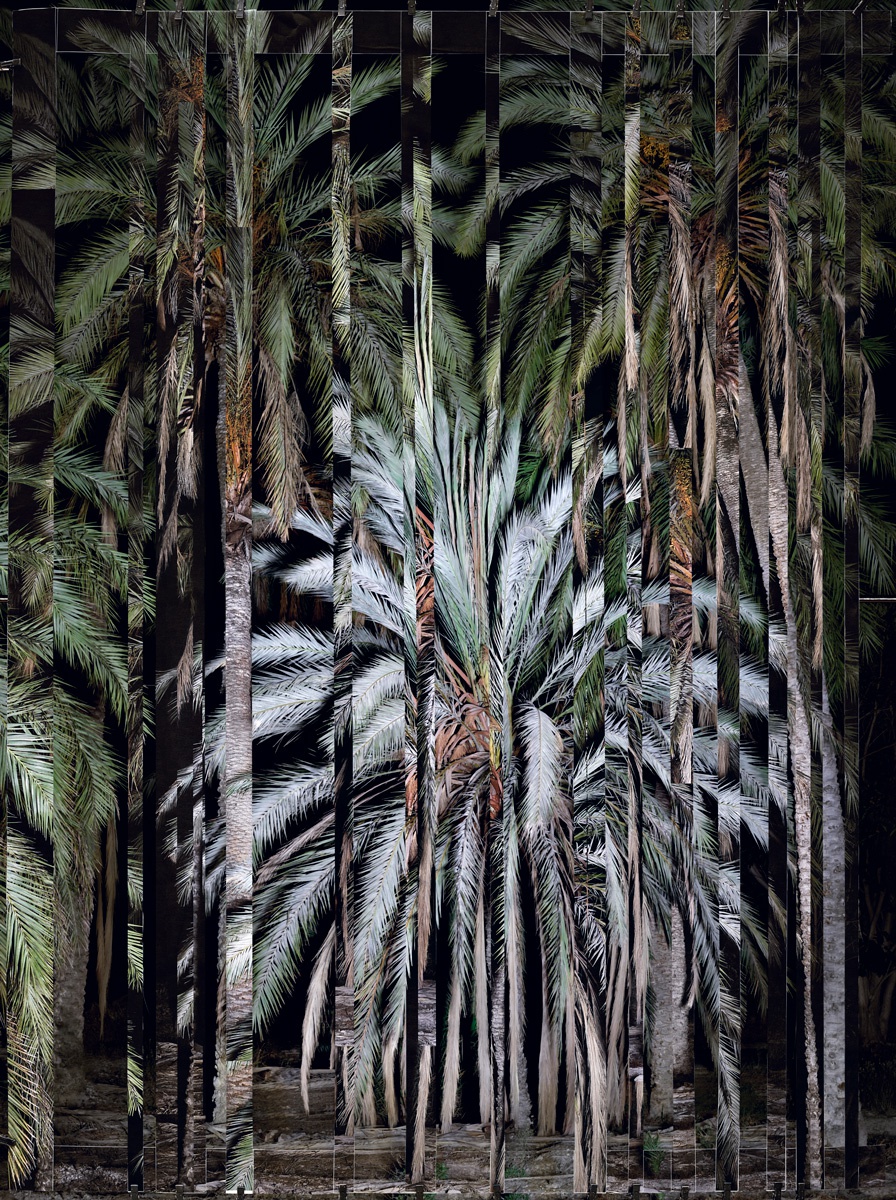15 October 2021 Until January 2, 2022, the Grand Café de Saint-Nazaire will host Post Atlantica, a collection of works by Noémie Goudal never been shown before to the public. An ensemble combining the visual artist's passion for science and her love for illusion.

Noémie Goudal, Phoenix VII, 2021, C-Print. 200 x 149 cm, 78 3/4 x 58 5/8 in.
"My works are a way to talk about the long time, in opposition to the "time of the Man". I wish to make the link between the Earth in its entirety and what non-scientists perceive of this planet. Because the human being does not see the movement of things, and thus believes to be a fixed entity", says Noémie Goudal. Photographer and visual artist, the artist born in 1984 presents, at the Grand Café a new body of work entitled Post Atlantica. Between images, videos and installations, majestic nature and surrealist trompe-l'oeil, she explores our planet and tries to illustrate, with a steely curiosity, various scientific theories and their repercussions on our environment. Thus, Post Atlantica refers to our time, but also to the past, and its consequences on the future. "It is a way of setting the scene, and of evoking a subject that particularly speaks to me: time. Here, I relied on research that looks at minute traces, and try to understand what an extremely ancient period looked like in order to better question our future," she adds.
The deconstruction of the natural landscape
Thus begins an immersion in a path strewn with illusions. For Noémie Goudal stands out through her singular practice of the 8th art, notably presented in the digital journey Elles X Paris Photo. In her works, no digital retouching, but rather a remodeling of the territory, using sheets of paper, pliers and other rudimentary accessories. As a way to question our perception of the environment, while abandoning ourselves to the magic of the mirage. In the "decantation room", the first stage of the journey, the author displays a series of photographs taken in the middle of nature. On the pale pictures, landscapes and images mingle, indistinguishable from each other. It is by melting the paper with water that the trickery appears. Further on, a film, shot in Poitou-Charentes in a swampy area appears in offset on two screens installed back to back. A short film capturing the assembly of one of his installations.
On the Grand Café floor, Phoenix, a series devoted to palm trees, exhibited in the half-light, presents captivating organic glitches - a result obtained by making a 1:1 print of the trees, then cutting them into strips, and replacing them in front of the original scene. "So there's an oscillation between the images in the frame and the actual landscape behind," she says. In the next room, a video catches the visitors, who contemplate, stunned, a natural setting on fire ... Until revealing, in the chaos that follows the fire, a wooden set. The journey ends on the first floor, in front of a cave made of paper, which can only be seen in its entirety by standing precisely opposite. "I experimented here with anamorphosis, inspired by stereoscopes, these boxes with double lenses, which allow to look at two images separately and to see a figure appear in 3D. Thanks to a stratagem of deconstruction of the natural landscape, I make something artificial out of it", confides the photographer.
The relentless advance of time
Immersive and marvelous, Post Atlantica plays with the senses and invites the visitor to doubt his own perception. A plastic research rooted in a deep fascination for science. If Noémie Goudal does not claim to be a "committed photographer" or "ecologist", her creations are fleshed out by her numerous researches. "I discovered the theory of Buffon (naturalist, mathematician, biologist and French philosopher of the 18th century, editor's note), which is based on the creation of the biblical world and proposes to separate the creation of the world into seven periods. It is revolutionary - he is one of the first to mention the anthropocene era! From the Gaia Theory - a philosophical concept proposing to perceive the Earth as a living entity, and all that it comprises as interdependent - to the drift of the continents, through the movements of landscapes, each creation proposes a wink to the evolution of our world, and to the tiny place that Man occupies within this metamorphosis.
A metamorphosis which appears particularly striking to us, confronted with the irruption of fire in the second short film presented. "This realization is linked to the discovery of a Scottish scientist who had conducted studies in Antarctica, and found deposits of coal. A presence placing tropical forests in this place of the planet! This was proof that the area was once much closer to the equator," continues the photographer. And, in front of the flames that rise, the heat they evoke, the chaos they spread, in front of the remarkable trompe-l'oeil of Noémie Goudal, the visitor can only notice his smallness, in the heart of the great universal movements, of the implacable progress of time.

